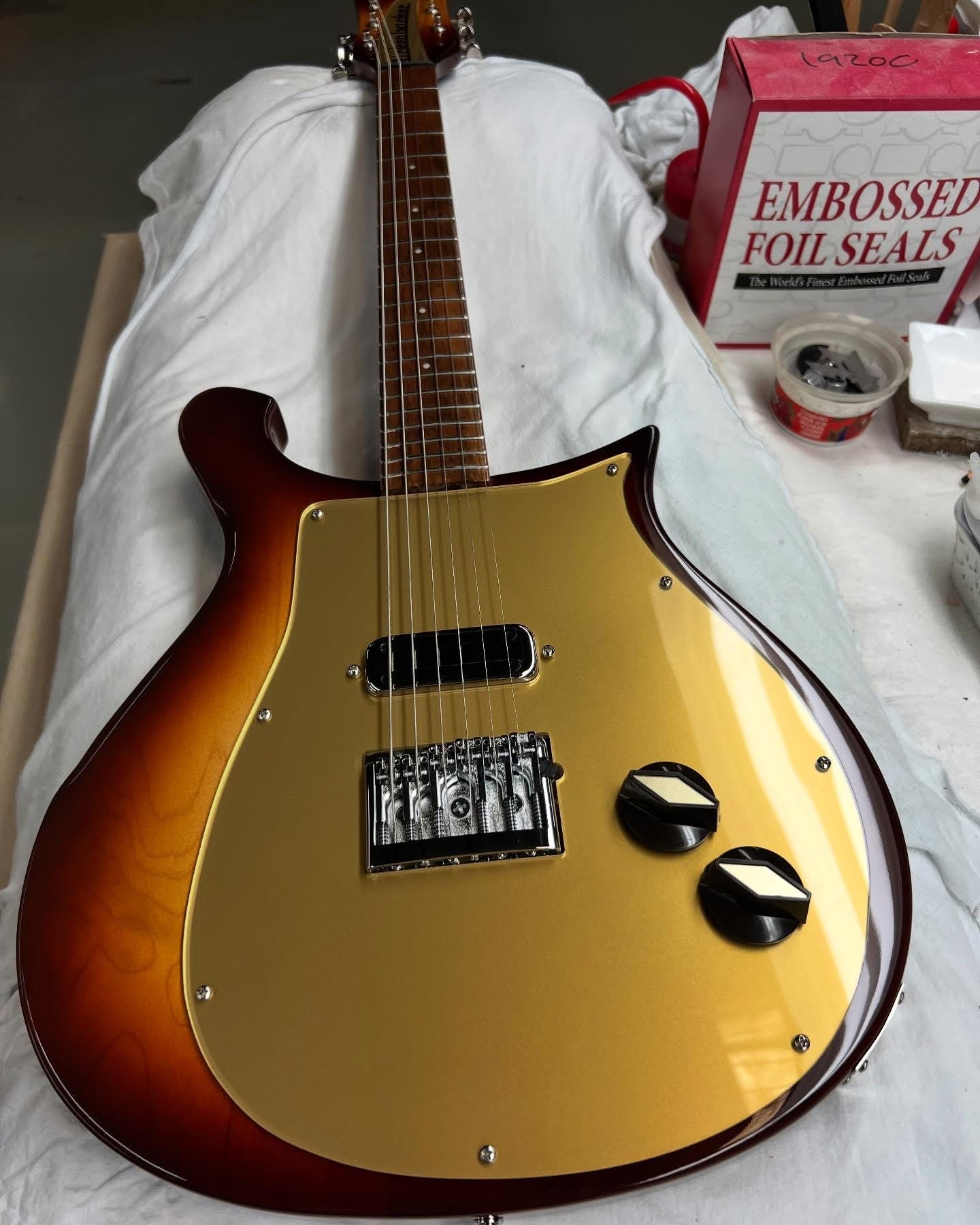Short Takes: 2025 425 SPCs
I don’t usually discuss Rickenbacker Boutique guitars here because, for the most part, they tend to simply be production models with a cosmetic or minor electronic twist—a weird color or HB1 pickups or the like. You know…basically clickbait. Cool? Absolutely…sometimes. Other times, less so. But these four guitars are not that. They’re something completely different.

Dubbed the “425SPC”, it takes the classic single pickup 425/420 cresting wave body and gives it…a short scale neck? And a “leftover” Schaller bridge last used on the 650? And a side output jack? Now that’s…different!

So to be clear: Rickenbacker has produced several short-scale solidbodied guitars over the years—the 900, 950, and 1000/ES-17 you can learn all about here. This is not a new concept. And there were four different body shapes associated with those models over the years. But none of them was the cresting wave body. This a a combination that has never existed before.

Ok, so here’s what we can piece together from the few pictures we have available. It’s a neck through guitar, and the necks had to be custom built for these guitars because a) there is no short-scale through neck in the line; b) they’re not “old stock” leftovers because Rickenbacker hasn’t made a short-scale through neck guitar since 1971 (and they’re two piece necks to boot!); and c) there is no “low deck height” through neck—long or short scale—in the current line
They’ve given it the 21 fret neck found on the 900/950 (with an unfinished board?) instead of the 18 fret neck found on the 1000, which kinda throws the proportions off a bit. See how far up the body the bridge sits? With 18 frets it could have been about 1 1/2” closer to the end of the guitar. Look—here’s a 620 and 1000 side by side:

The bridge is 4 1/2”-5”-ish away from the base on both guitars, and the proportions look “right”. Now here’s the bridge placement on these 425SPCs:

Notice how much higher it sits? It just makes the whole thing look a little wonky. I honestly thought the body was a slightly different shape than the standard cresting wave until I covered up the bridge with my thumb—and then it looked “right”.
The bridge itself is the same Schaller unit with roller saddles that was last used on the 650 guitars instead of the recessed bridgeplate and standard Rickenbacker adjustable bridge normally found on the 425. That’s actually an upgrade in my book!

Here’s that bridge on a 650. If you’re wondering what that screw on the side is, it’s NOT a trem hole. It’s used to lock the saddles in place side to side as there was a little play in the design.
The other differences from the original 420/425 are what’s missing from the control panel: the output jack and a 3 way switch. The output jack moves to the side here, and the old three way switch—which worked very similarly to a Fender Esquire (low pass filter/normal/volume direct out)—is deleted. Considering nobody ever uses the low pass setting, it’s no great loss.

These are just weird. I’m not sure yet if it’s weird in a good way…although I’m leaning yes. I mean look, this is never gonna be a production guitar. So I’m happy to see the factory try things just for the sheer hell of it. And in 30 years one of these is gonna pop up on the market and people are going to say “what in the hell is that thing? It’s gotta be a faker, right?” Nope. It’s the real deal!


I don’t see paying that price for this guitar. Just a personal opinion. For me, other than a one off, it just isn’t worth it.. I do like them experimenting 👍